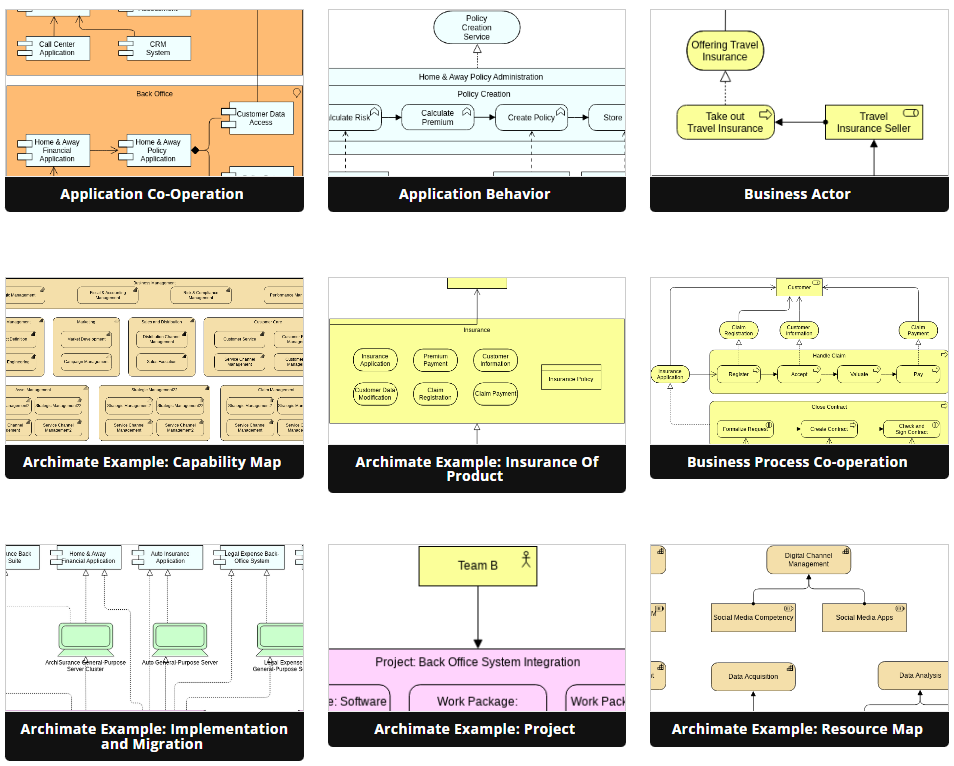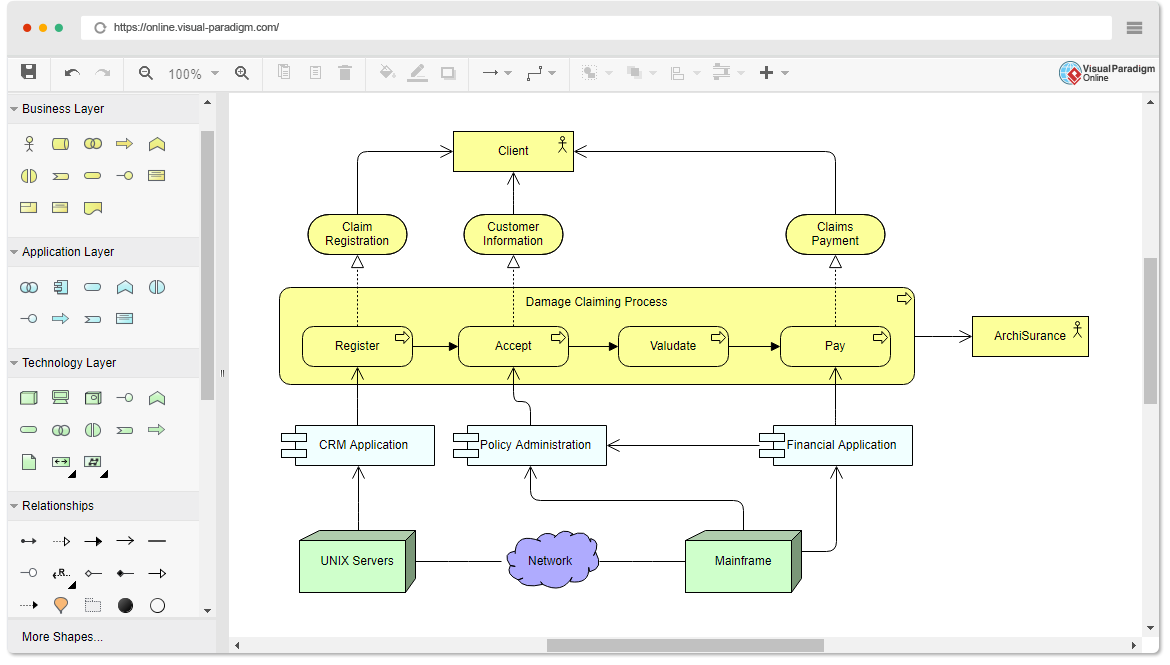Comprehensive Guide to ArchiMate Diagrams
Introduction
ArchiMate is an open and independent enterprise architecture modeling language that provides a standardized way to describe, analyze, and visualize architecture within and across business domains. It is widely used for creating architectural models that help organizations make informed decisions and manage complex systems. This guide will provide you with a comprehensive overview of ArchiMate diagrams, including their purpose, key concepts, and elements, along with practical examples using pre-made templates available in Visual Paradigm Online.

Purpose of ArchiMate Diagrams
ArchiMate diagrams serve the following key purposes:
- Architecture Visualization: ArchiMate diagrams help visualize and represent various aspects of an enterprise’s architecture, making it easier to understand and communicate complex systems and their relationships.
- Decision Support: They aid in decision-making processes by providing a clear view of the potential impacts and consequences of architectural changes or decisions.
- Cross-Domain Integration: ArchiMate enables the integration of different architectural domains, including business processes, applications, and technology infrastructure, allowing organizations to align their strategies and operations effectively.
- Communication: They facilitate effective communication among stakeholders, including business analysts, architects, and IT professionals, by providing a common language and visual representation.
Key Concepts and Elements in ArchiMate
1. ArchiMate Framework
The ArchiMate language is structured around a framework that divides the enterprise architecture into three primary domains:
- Business Layer: Focuses on modeling business processes, organizations, roles, and goals.
- Application Layer: Deals with applications, services, and their interactions within the organization.
- Technology Layer: Encompasses technology infrastructure, hardware, software, and their relationships.
Each of these layers consists of various elements and relationships that help in modeling and understanding the architecture.
2. ArchiMate Elements
Business Layer Elements:
- Business Actor: Represents individuals, groups, or entities that interact with the organization.
- Business Process: Models a sequence of activities to achieve specific business goals.
- Business Role: Defines the responsibilities and behaviors of individuals or groups within the organization.
Application Layer Elements:
- Application Component: Represents software applications or modules.
- Application Service: Defines the functionality exposed by application components.
- Application Interface: Specifies how application components interact with each other or with external entities.
Technology Layer Elements:
- Node: Represents hardware or software computing resources.
- Communication Path: Illustrates the communication routes between nodes.
- Technology Service: Represents technology-related capabilities provided by nodes.
3. ArchiMate Relationships
ArchiMate diagrams also include various relationships to depict how elements interact and depend on each other. Some important relationships include:
- Association: Represents a generic relationship between elements.
- Aggregation: Shows that one element is composed of other elements.
- Realization: Indicates that one element implements another element’s behavior.

Learning by Examples using Visual Paradigm Online
Visual Paradigm Online is a user-friendly online diagramming tool that provides pre-made templates for ArchiMate diagrams. Here’s a step-by-step example of creating an ArchiMate diagram using Visual Paradigm Online:
Example: Business Process Model
- Open Visual Paradigm Online: Go to Visual Paradigm Online (https://online.visual-paradigm.com/) and sign in or create a free account if you don’t have one.
- Create a New Diagram:
- Click on the “New Diagram” button.
- Select “ArchiMate” from the list of diagram types.
- Choose the “Business Process” template.
- Add Elements:
- Drag and drop “Business Process” elements onto the canvas to represent your business processes.
- Add “Business Actor” and “Business Role” elements as well to depict the actors and roles involved.
- Create Relationships:
- Use the provided connectors to establish relationships between elements. For example, use the “Flow” connector to show the flow of activities between processes.
- Customize and Annotate:
- Customize element shapes, colors, and labels to suit your specific requirements.
- Add annotations and descriptions to clarify the diagram.
- Save and Share:
- Save your diagram in your Visual Paradigm Online account.
- Share the diagram with stakeholders by generating a shareable link or exporting it in various formats.
Conclusion
ArchiMate diagrams are powerful tools for modeling and visualizing enterprise architecture. They help organizations align their strategies, make informed decisions, and communicate effectively across different domains. By using tools like Visual Paradigm Online and following the key concepts and elements outlined in this guide, you can create informative ArchiMate diagrams to support your enterprise architecture initiatives.

